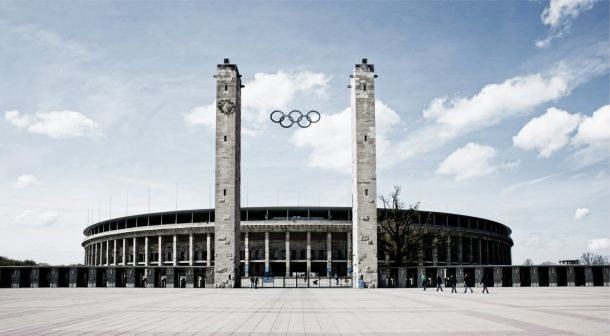On a momentous afternoon of European football on Saturday, Borussia Dortmund and VfL Wolfsburg are contesting the DFB-Pokal Final in one of world sport's most iconic arenas.
The Berlin Olympiastadion, built by the Nazis for the infamous 1936 Summer Olympics, is thought to once have a capacity of around 100,000, but is now the second-largest stadium in Germany with a capacity of 74,400 - around 15,000 fewer than Wembley
Its primary occupants, Hertha Berlin, managed an average attendance of around the 50,000 mark this season, a more-than respectable total for a club which hovered around the lower-mid-table area for much of a forgettable year.
As well as being used for athletics, with other facilities including a swimming pool and diving area surrounding the stadium, the arena itself has a formidable reputation as a football ground. Having hosted games at the 1974 and 2006 World Cup, the twin pillars at the entrance to the ground have become a tourist attraction in Berlin similar to the Wembley arch. It will also play host to this season's Champions League Final between Barcelona and Juventus.
Outside of the facts and figures, however, the stadium takes on a far deeper significance for followers of history and sport alike. The ghosts of its shadowed past still strike a discordant presence around the ground, with barely-concealed swastikas left in place to remind visitors' of the stadium's original occupants.
While the atmosphere on matchdays can vary - the German crowd is typically vocal as shown below, but the distance between the fans and the pitch is a point of complaint for some - there is certainly a feel of the historic around the extended Olympiapark outside of the season. Simply put, whether for sporting, cultural or historical reasons, the Olympiastadion is one of the planet's must-visit sporting arenas.










































